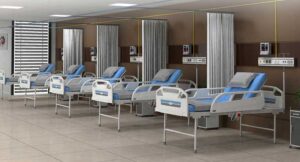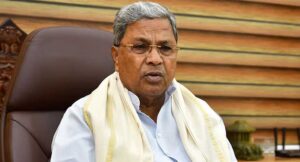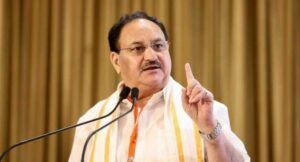Surging demand for artificial intelligence (AI) has driven Telstra to upgrade its international networks, with a planned network using AI and digital twins to manage itself as the carrier chases new revenues in a stagnant telco market – and bolsters security in uncertain times.
The company’s business-focused Telstra International division outlined its plans for next-generation infrastructure using new technologies from Infinera and Ciena to increase the capacity of its more than 400,000km of undersea networks that link Australia to the world.
The upgrade, which will boost capacity to 800 terabits per second (Tbps), will more than triple the capacity of Telstra’s global networks – which currently offer around 235 Tbps capacity connecting over 2,000 sites in more than 200 countries and territories.
The new network will lean heavily on AI, using the technology to monitor the status of each strand of the spaghetti-like tangle of fibre-optic networks – and using a complex ‘digital twin’ to model the links, detect any issues, test changes, and reroute traffic in real time.
Self-monitoring technology – to be implemented over the next five years using Ciena’s AI, machine learning, and cognitive computing systems – is “a fundamental shift in how we manage and operate our international network,” Telstra International CEO Roary Stasko said.
“With the scale of our subsea network in the Pacific, this move will better position us to ensure the stability of the world’s digital connectivity, and support the future growth of local economies,” Stasko said, noting that adoption of AI is expected to triple demand by 2030.
“We expect to see traffic grow at a much faster rate with the development of AI, which drives the need for more capacity and a network that covers vast areas of society.”
AI is hungry for data – so Telstra is expanding its kitchen
The investment comes as Telstra nears the end of its T25 strategic mission, which has focused on migrating 90 percent of the company’s applications to the public cloud and adopting AI across key business processes by the middle of this year.
AI-driven systems like Telstra’ Ask Telstra knowledge base now handle over 79 percent of consumer and small business service requests, while Telstra is using AI internally to summarise customer interactions, detect scam emails and SMSes, and more.
“Achieving real transformation requires more than technology,” Telstra group owner for edge and cloud Angela Logothetis explained.
“It requires leading ourselves to lead others: a business should be fully engaged with the advanced technologies they want to deliver for their clients.”
Telstra is also building on its internal experiences with AI to attract key strategic partners.
Last August, for example, it inked a strategic AI partnership with Microsoft that will give the cloud and AI giant company priority access to Telstra’s new Intercity Fibre Network (IFN).
The IFN – which Telstra says will add 10 fibre routes spanning 14,000km and ultimately provide “more capacity than all other existing fibre networks in Australia combined” – will do for domestic data what the 800 Tbps undersea boost will do internationally.
That “nation-building investment… is going to connect industries with huge data requirements,” Telstra has said, citing demand from industries like data centre providers, hyperscalers, and satellite providers.
Telstra also this month announced a seven-year joint venture with Accenture that will “reinvent business processes” by enlisting Accenture’s AI experts to help build new AI tools and consolidate Telstra’s current 18 vendor support contracts down to just two.
Facing the challenges of critical infrastructure
Telstra’s investment will help it meet growing demand from the data centre operators that host cloud services and power-hungry generative AI (genAI) services – and have been investing heavily to diversify as they look past torpid mobile and Internet service revenues.
Equinix last year committed $240 million to add 4,175 new server cabinets to host AI services in its Sydney and Melbourne data centres, while rival NEXTDC is eyeing a $750 million investment to strengthen its position in Australia and regional markets.
Macquarie, for its part, will invest up to $8 billion in the US AI market and just announced it will also invest at least $80 million into Brazilian telco Brasil Tecpar.
It’s all part of a global gold rush as telcos transform from telecommunications providers into ‘techcos’ providing sophisticated infrastructure, applications, and services built around new technologies like AI.
Yet even as Telstra leans on undersea capacity to support its techco transformation, the geopolitical sensitivities around such networks were writ large when Russia and China were alleged to have intentionally cut such cables by dragging ships’ anchors across them.
As the arteries of the increasingly global, AI-driven information economy, terrestrial and undersea cables are strategic national assets that some adversaries see as legitimate targets – further validating the benefits of Telstra’s autonomous network architecture.
“By 2030 we will have built a highly autonomous network able to detect underutilised routes and turn capacity up or down or respond to changes or detect vulnerabilities such as temperature levels and move traffic off those to avoid outages,” Stasko said.
“AI and ML give us the opportunity to strengthen our network defence.” Informationage









